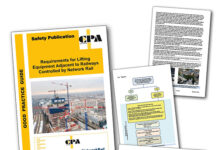
By Kevin Rowe, MD of SafetyBuyer.com
AS the impact of the Covid-19 pandemic continues to ease, construction firms will be looking forward to completing their summer working schedules with much less disruption and uncertainty than at this time last year.
This steady return to normalcy will certainly be welcomed, but it will also mean that employers need to invest time and resources into carrying this work out safely. Sites that closed last summer will once again need to proactively manage the various risks associated with outdoor construction work, as well as their continuing responsibility to curb the spread of Covid-19.
Here, industry supplier SafetyBuyer explores the factors that need to be considered when planning outdoor work this summer – and highlights some of the practical solutions available.
Heat and sun exposure
Exposure to direct sunlight and high temperatures is one of the most serious risks of summer working. Construction workers are more likely to experience exhaustion, dehydration and overheating in summer, while direct sunlight can also cause skin damage and cancer.
As such, you should adopt the following protective measures:
- Encourage staff to cover up with appropriate personal protective equipment (PPE) to reduce sun exposure
- Implement more frequent breaks in the shade during sunny days
- Remind staff to apply high-factor sunscreen throughout the day
- Ensure staff have access to water whenever they need it
- Schedule work to take place in the shade, or at cooler times of day where possible
Working at height
Outdoor works projects frequently involve working at height, which brings significant and unique risks. Whether staff are being asked to work on scaffolding, ladders, roofs or any other tall structure, business must take precautions to prevent dangerous slips, trips and falls.
This includes the following:
- Carry out a full risk assessment to identify all possible dangers, and to determine whether the work can be done safely from the ground
- Put safety barriers and railings in place where possible to ensure safe access around edges and openings
- Educate staff on safe ladder use, including safe positioning and climbing methods, as well as how to make sure the ladder is in good condition
- Utilise clear safety signs to warn of the risks of working at height, as well as the risk of falling objects to those below
- Introduce safety harnesses, fall restraints and netting as a last resort if no other equipment can be used
Loud noise
Many outdoor jobs tend to use heavy equipment, such as pneumatic drills, which create a loud noise. Extended use of this equipment can result in hearing loss and damage to the ears over time, unless the proper precautions are taken:
- Identify whether quieter equipment can be used instead
- Use screens and absorbent barriers to reduce on-site noise, and keep people away from loud equipment
- If exposure to loud equipment is essential, provide staff with high-quality hearing protection gear
Outdoor hazards
When working outdoors, it is inevitable that worksite conditions cannot be controlled as closely as an indoor environment. As such, your workers may need to contend with additional hazards such as uneven surfaces and loose ground, or exposure to outdoor allergens.
To mitigate these risks, you should take the following steps:
- Thoroughly assess the site in advance to get a full overview of the potential hazards, and devise safe systems of working accordingly
- Cordon off potentially unsafe areas, or use safety signs to warn those on-site of hazardous terrain
- Provide the most appropriate PPE – such as footwear, gloves and face masks – to keep them safe
Covid-19 prevention
Although Covid-19 does not primarily spread outdoors, businesses still have a legal responsibility to comply with current government guidance on Covid-19 prevention in indoor and outdoor workplaces.
This means taking the following steps:
- Keeping surfaces and shared equipment regularly cleaned and sanitised
- Ensuring that staff are wearing appropriate face coverings and PPE where necessary, in line with the current rules
- Maintain social distancing and avoid crowding on site
- Ask any staff members with Covid-19 symptoms to self-isolate
These general suggestions will help to keep your staff safe during the summer months, but as always, it is vital to conduct your own detailed risk assessments to ensure you have properly accounted for all of the specific hazards present on your site.
By doing so, you can ensure that your staff are able to complete their work safely and efficiently this summer, giving your business the best chance of bouncing back to full strength after a challenging year.










